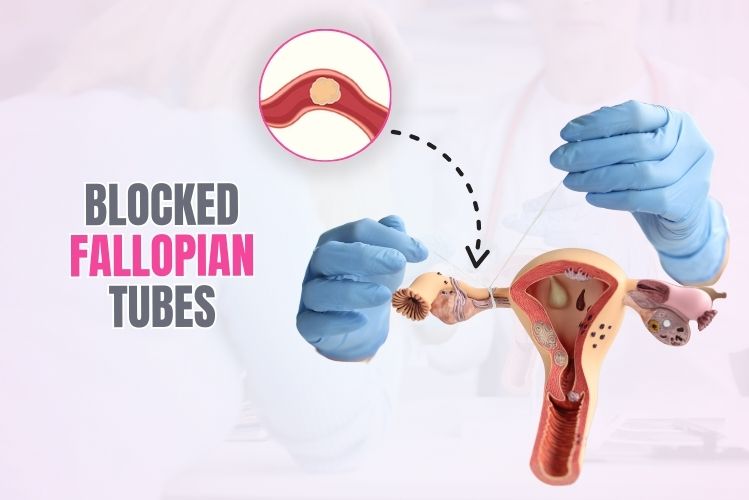Blocked fallopian tubes are one of the leading causes of infertility in women, affecting a woman’s ability to conceive naturally. These tubes play a crucial role in the journey of the egg from the ovaries to the uterus. When they are blocked, this natural process is interrupted, making conception more difficult or impossible. For many women, this diagnosis can be devastating, but understanding the causes, symptoms, and treatment options, including surgery for fallopian tubes or even fallopian tube removal in Dubai, offers hope.
In this blog, we’ll explore everything you need to know about blocked fallopian tubes—from what causes them to how they are diagnosed and the various treatment options available to restore fertility.
What Are Blocked Fallopian Tubes?
Fallopian tubes are the passageways through which an egg travels from the ovaries to the uterus. Fertilization typically occurs in these tubes, where sperm meets the egg. When the fallopian tubes are blocked, this pathway is obstructed, preventing the egg and sperm from meeting. The blockage could be partial or complete, depending on the severity of the issue.
There are two main types of blockage:
- Proximal Blockage: This occurs at the point where the tube meets the uterus.
- Distal Blockage: This is when the blockage happens near the ovary.
Both forms can make it difficult for women to conceive naturally, often leading to infertility.
Causes of Blocked Fallopian Tubes
Understanding the root cause of blocked fallopian tubes is essential for determining the most appropriate treatment. Several factors can contribute to fallopian tube blockages, including:
- Pelvic Inflammatory Disease (PID): One of the most common causes, PID often results from untreated sexually transmitted infections (STIs) like chlamydia or gonorrhea. The resulting inflammation can cause scar tissue that blocks the fallopian tubes.
- Endometriosis: This condition occurs when the tissue that normally lines the inside of the uterus grows outside it, including on the fallopian tubes. The resulting scar tissue can obstruct the tubes.
👉🏻 Read more about Endometriosis here.
- Fibroids: Uterine fibroids, especially those located near the fallopian tubes, can sometimes cause blockages by compressing the tubes.
- Previous Surgeries: Abdominal or pelvic surgeries, including surgeries for ectopic pregnancies or cesarean sections, can lead to scar tissue that blocks the fallopian tubes.
- Congenital Defects: In rare cases, some women are born with structural abnormalities in their fallopian tubes, which can impede the passage of eggs.
Symptoms of Blocked Fallopian Tubes
One of the most challenging aspects of blocked fallopian tubes is that they often present no symptoms. Most women only discover they have blocked tubes when they experience difficulty conceiving and undergo fertility testing.
However, in some cases, symptoms can arise, including:
- Pain in the Lower Abdomen: If the blockage is due to conditions like endometriosis or PID, women may experience chronic pelvic pain or discomfort.
- Painful Menstruation: Endometriosis-related blockages can lead to more painful or heavy periods.
- Ectopic Pregnancy: A blocked fallopian tube can increase the risk of an ectopic pregnancy, where the fertilized egg implants outside the uterus, typically in the fallopian tube itself. This condition is a medical emergency and can cause severe abdominal pain and vaginal bleeding.
If any of these symptoms occur, it’s crucial to seek medical attention promptly.
How Are Blocked Fallopian Tubes Diagnosed?
If a woman suspects that blocked fallopian tubes might be the cause of her infertility, several diagnostic tests can confirm the presence of blockages:
- Hysterosalpingography (HSG): This is an X-ray procedure in which a dye is injected into the uterus and fallopian tubes. The dye allows doctors to see if the tubes are open or blocked.
- Ultrasound: In some cases, an ultrasound, particularly a specialized one like a saline infusion sonography, can provide clues about blockages.
- Laparoscopy: This is a surgical procedure that allows doctors to view the fallopian tubes and other reproductive organs directly. It’s considered one of the most accurate ways to diagnose blockages, especially in cases of endometriosis or adhesions.
- Blood Tests: While blood tests can’t diagnose blocked tubes directly, they can help identify underlying conditions, such as infections or hormonal imbalances, that might contribute to the problem.
Treatment Options for Blocked Fallopian Tubes in Dubai
The treatment for blocked fallopian tubes depends on the cause, location, and extent of the blockage. Several options can help restore fertility or alleviate symptoms:
1. Fertility Medications
If one fallopian tube is blocked but the other is open, fertility medications may help stimulate ovulation. This increases the chances of releasing an egg that can travel through the unblocked tube. However, this treatment is not effective for women with both tubes blocked.
2. Surgery for Fallopian Tubes
Surgical treatment is often required when both fallopian tubes are blocked. Surgery can remove blockages, repair damage, or create a new passage for the egg to travel through. The success of surgery for the fallopian tubes depends on the severity of the blockage and the woman’s overall reproductive health. Types of surgery include:
- Tubal Cannulation: This procedure involves using a catheter to unblock the fallopian tubes.
- Fimbrioplasty: A surgical procedure that repairs the fimbriae, the finger-like projections at the end of the fallopian tube, to help them catch the egg.
- Salpingostomy: In cases where the distal end of the tube is blocked, this surgery creates a new opening in the fallopian tube.
3. Fallopian Tube Removal
In some cases, if the blockage is severe or the tube is damaged beyond repair, fallopian tube removal may be recommended. This procedure is called salpingectomy, and it’s especially common in cases where an ectopic pregnancy or infection has caused significant damage.
In cities like Dubai, this procedure is available at many state-of-the-art facilities, offering women access to advanced reproductive care. Women who opt for fallopian tube removal in Dubai may still conceive through in vitro fertilization (IVF), where eggs are fertilized outside the body and then transferred to the uterus.
4. In Vitro Fertilization (IVF)
For women with blocked fallopian tubes, IVF is often the most effective treatment option. IVF bypasses the fallopian tubes entirely, making it an ideal choice for women whose tubes are severely damaged or cannot be repaired surgically. While IVF can be expensive, it has a high success rate, especially for younger women.
Can Blocked Fallopian Tubes Be Prevented?
While not all causes of blocked fallopian tubes can be prevented, taking certain precautions can reduce the risk:
- Practice Safe Sex: Using condoms and getting regular STI screenings can help prevent infections that lead to pelvic inflammatory disease, a major cause of blockages.
- Get Regular Checkups: Early detection of infections or conditions like endometriosis can prevent complications that could lead to blocked tubes.
- Stay Informed About Your Reproductive Health: If you’ve had abdominal or pelvic surgeries, it’s a good idea to discuss the potential impact on your fertility with your doctor.
Frequently Asked Questions (FAQs)
1. Can blocked fallopian tubes cause pain?
Yes, while many women with blocked fallopian tubes experience no symptoms, some may have pelvic pain, especially if the blockage is due to conditions like endometriosis or pelvic inflammatory disease.
2. Can I get pregnant with only one open fallopian tube?
Yes, if one tube is open and healthy, it’s still possible to conceive naturally, although it may take longer. Fertility medications may also help improve your chances.
3. What are the success rates of surgery for blocked fallopian tubes?
Success rates depend on the type and severity of the blockage, as well as the woman’s age and overall health. Surgical interventions are most successful when the blockage is minimal and there is no significant damage to the tubes.
4. How much does fallopian tube removal in Dubai cost?
The cost of fallopian tube removal in Dubai can vary depending on the medical facility and the complexity of the procedure. On average, it can range from AED 10,000 to AED 20,000, but it’s essential to consult with a specialist for a detailed quote.
5. Can I avoid surgery for blocked fallopian tubes?
If only one tube is blocked or the blockage is partial, medications and non-invasive treatments might help. However, if both tubes are completely blocked, surgery or IVF may be the only viable options.
6. Is IVF a good option if I have blocked fallopian tubes?
Yes, IVF bypasses the fallopian tubes entirely and is often the best option for women with blocked tubes, especially if surgery is not a suitable option.
Conclusion
Blocked fallopian tubes can feel like an overwhelming diagnosis, especially when trying to conceive. However, with the right knowledge, support, and treatment, there are many options available, from medication and surgery to advanced reproductive technologies like IVF. Whether you’re exploring surgery or considering fertility treatments like in vitro fertilization (IVF), it’s important to understand your options and make informed decisions.
You can consult Dr Neha Lalla at these locations or simply call
☎️ on +971 50 307 3225
📍 Address: Burjuman Mall, Prime Medical Centre – Khalid Bin Al Waleed Rd – Al Mankhool – Dubai – United Arab Emirates
🗺️ Directions: Dr Neha Lalla
📍 Address: Prime Hospital – Casablanca St – Al Garhoud – Dubai – United Arab Emirates
🗺️ Directions: Dr Neha Lalla | Best Indian Gynaecologist in Dubai | Gynecologist | Dubai
Also read our other blogs:
Endometriosis | When should you consider surgery?
From Ignorance to Awareness: Understanding Ovarian Cancer


